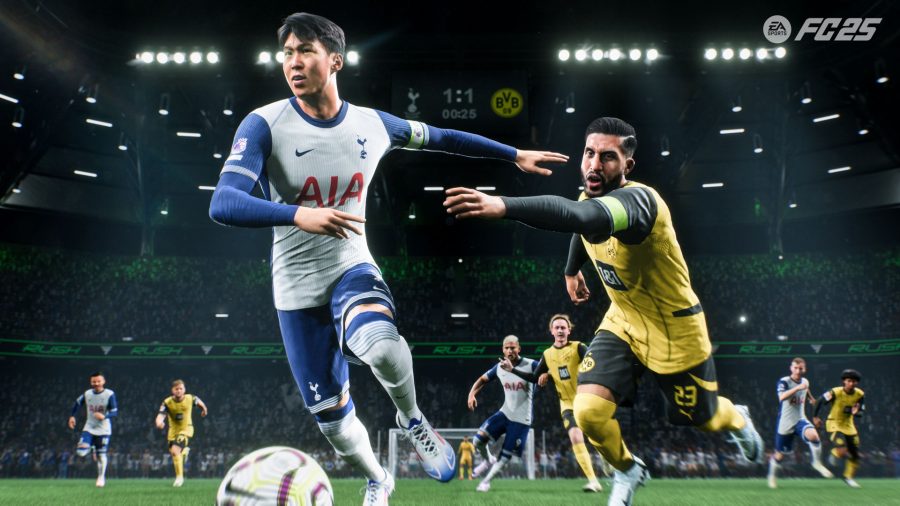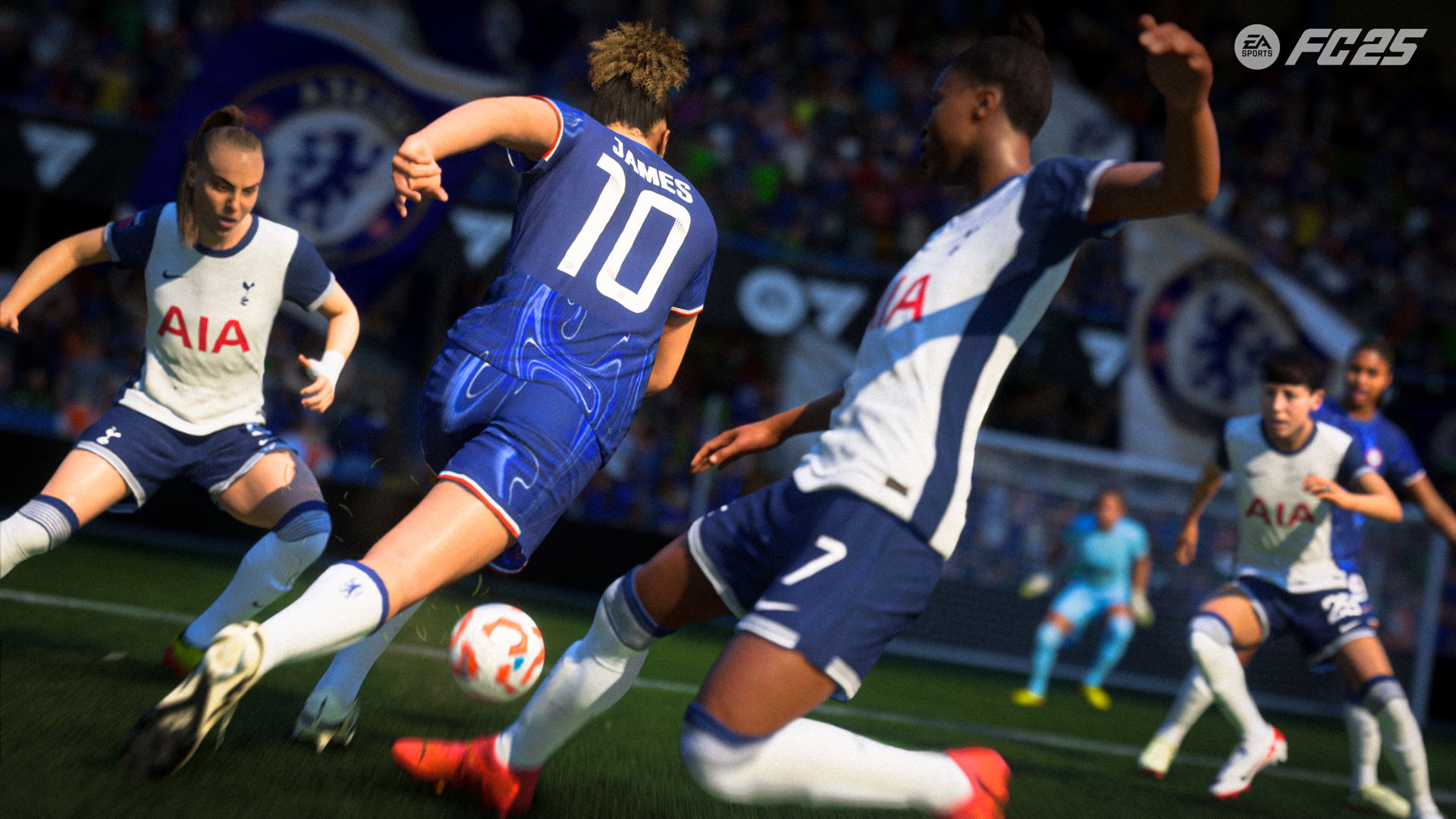What is EA Sports FC 25’s new ‘FC IQ’ feature?


EA Sports loves to put buzzy marketing names on new features in its games. “FC IQ” is no different in… Continue reading What is EA Sports FC 25’s new ‘FC IQ’ feature?
The post What is EA Sports FC 25’s new ‘FC IQ’ feature? appeared first on ReadWrite.

EA Sports loves to put buzzy marketing names on new features in its games. “FC IQ” is no different in this regard. But there’s real depth in this, serving all modes of play, and that arrives when the game launches on Sept. 27.
FC IQ, put simply, is a tactical layer that allows players greater direction over their side’s behavior and priorities. For three years, the game has incorporated thousands of animations and pitch movements through its “HyperMotion” engine, which draws on camera captures from real-life games as well advanced player analytical data from the Opta firm. FC IQ is the application of both technologies, which the player can control.
In EA Sports FC 25, players can define not just the tactical approach of an entire squad, but the role every player performs within it. That’s impressive, and a little intimidating, but the game will also deliver prompts throughout a match, depending on its flow, to suggest players switch tactics, should they be preoccupied with the instant action on the gamepad.
“I’m passionate about tactics,” said Thomas Caleffi, the producer who shepherded the feature into EA Sports FC 25. He played for the youth squad of Grêmio, his diehard favorite side, in his home of Brazil, even. “Tactics is such an important part, and in our game, it existed, it was there, but I never thought it was really integrated. It was kind of like ‘OK, you can do the tactics, and that’s cool, but if you don’t touch it, it’s also fine.’”
In a presentation Caleffi illustrated what he meant by integrating tactics within the game. It was almost dizzying, the number of roles that could be played, and not just by the goal-scoring personnel. He showed a defensive backfield that operated on the false fullback style that Manchester City manager Pep Guardiola is known for. But from there, the left fullback had been given an attacking wing role. The central attacking midfielder was designated as a “shadow striker.” The forward and his strike partner had traditional finish-the-job roles.
I won’t pretend to understand it, as I’m not a knowledgeable soccer fan in the least. But it sent a message that EA FC’s AI-driven players can now push out the boundaries of their roles, such that when you switch over to them, they’ll be somewhere more advantageous and useful than the old set of D-pad tactics, which was an all-unit directive that ranged from all-out attack to park the bus.

“Just because you have superstars doesn’t mean you have a superstar tactic in place,” Caleffi said, referring to older versions of the EA FC/FIFA series. “It doesn’t mean your team is going to perform well every time. So that’s where things started coming from: “Do I get the best of my players? Do I make them play as a team? And do I maximize that team through tactics?’ That’s where it started.”
The important thing to remember about EA Sports FC 25’s virtual professionals is they’re coachable. Though they arrive with traits showing which roles they’re most adaptable to, they can always be brought along into a different style of play, because coaches still coach and players, even the highest paid superstars, still learn. Tactics are not chemistry-dependent in other words, or a take-it-or-leave-it proposition that means a manager who wants to deploy a new style of offense must find go out and find bespoke personnel who fit that if it’s going to have a chance of success.
Players will start with three and as many as five roles, from a group of 31 overall, that define how they approach their position. These roles will have a percentage value, showing how well they can fill that type of a job.
They’re also specific to the position. For example, fullbacks have an “attacking wingback” role option, where wing forwards have “wide playmaker.” But they can always be groomed for a new role, it just may take some time to ease them into it. If you want to run a tiki-taka, fast-passed, quick passing offense that needs a false 9 striker, you can convert your star to that role.
There are almost 20,000 players in EA Sports FC 25, so to assign these roles (and rate the player’s strength at performing them) Caleffi and his team built an algorithm that analyzed the Opta data their game was already using (in the form of Hypermotion) and built a profile of every player’s traits and tendencies. Any attempt to do this by hand — that is, watching a player’s film and judging his strengths and weaknesses — would have been prohibitively time-consuming.
“If players want to dive deep, and spend all of their time in the menus, they can,” Caleffi said. “That’s why there’s so much depth, and different familiarities, and different roles, that players can try to maximize and play around. But also, from the beginning, we wanted to make sure that if you didn’t want to spend that much time in the menus, in Ultimate Team, you can just pick a manager you like, and then you get that manager’s tactics.”
Does FC IQ require a lot of time to set up?
Caleffi is referring to a one-button press option in Ultimate Team where a player can go, OK, I’ve picked up this manager, now everyone on a team comprising stars from all over the world is going to play his style of game. But the point holds through other modes, too, which is simply that the game will go as deep as a player wants to go with their tactics for their side.
Some may be completely oblivious to the tactical use of their personnel, in which case EA Sports FC 25 will surface little nudges and notices suggesting things from a change in the pace of play all the way to substitutions. The point is that it’s not always up to the player to be mindful of a tactical layer as they’re also trying to execute, in real time, with the personnel in hand.
“LIke, I love tactics, but sometimes I forget, honestly,” Caleffi said. “Or if you’re in Career mode, and you’re like, ‘I just want to get into the match.’ But ‘Oh, damn, I didn’t do that.’ It’s OK. I’m going to get some suggestions. Or sometimes you’re so focused on the match that you didn’t realize you could change your tactics to do something better. So we’re like, ‘Hey, you should be winning this match, how about you go more attacking, more possession-based.’ It will pop up the message, and you just press the button, and your team will change to more possession based.”
FC IQ is one of those long-burn features, whose effects will be felt over a large stretch of play rather than in a single instance. But after three years of collecting data, from captured footage of real matches to the player-evaluation analytics that Opta provides, it’s interesting to see EA Sports develop an application of it, rather than continue to be passive observers.
We’ll find out what FC IQ really means for the game when it launches Sept. 27 for Nintendo Switch, PlayStation 4, PlayStation 5, Windows PC, Xbox One, and Xbox Series X.
The post What is EA Sports FC 25’s new ‘FC IQ’ feature? appeared first on ReadWrite.
